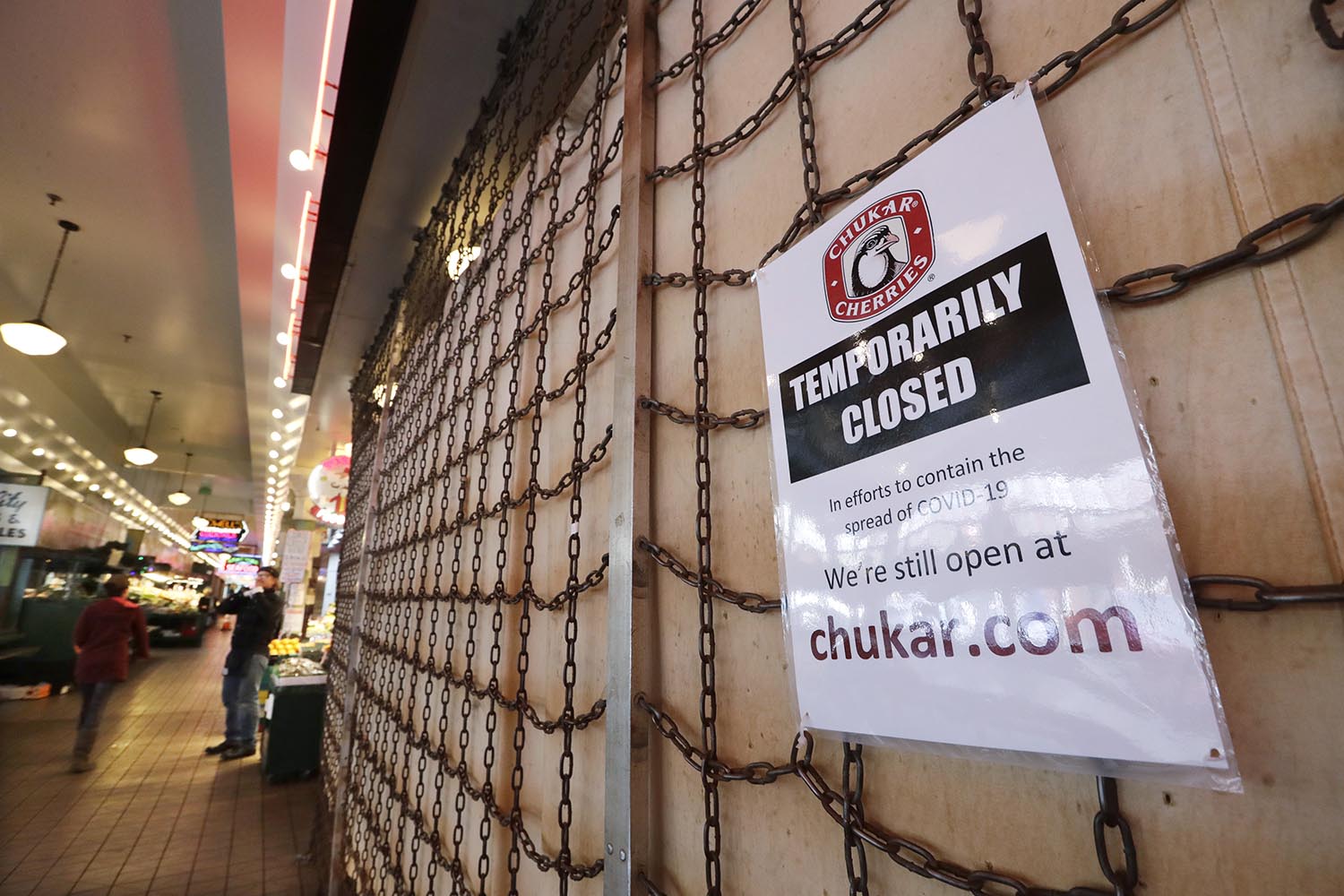
“There are a lot of people who are feeling a false sense of security right now, because they can work remotely,” said Martha Gimbel, a labor economist with the philanthropic group Schmidt Futures. “But if a huge amount of consumer spending gets sucked out of the economy, this is going to start having ripple effects.”
The March jobs report starkly shows which industries are taking the earliest hit. The leisure and hospitality sector overwhelmingly suffered the most, with almost two-thirds of the job losses recorded — or 459,000 — coming from those industries. Most of that decline covered people working in places like restaurants and bars, the Bureau of Labor Statistics said.
The drop wipes out almost all the gains in employment in those sectors over the past two years, the bureau said.
Workers in other industries saw impacts as well: Sectors including health care, professional and business services, retail trade and construction also saw notable declines, according to the report.
Economic forecasts overwhelmingly point to the situation continuing to deteriorate. On the lower end of the scale, the nonpartisan CBO said Thursday it expects the unemployment rate to exceed 10 percent during the second quarter. Goldman Sachs this week adjusted its forecast from a 9 percent jobless rate to 15 percent by mid-year — projecting a staggering 34 percent contraction in GDP in the second quarter.
The outlook only worsens from there. The left-leaning Economic Policy Institute estimates nearly 20 million workers will be laid off or furloughed by July, driving the unemployment rate to 15.6 percent. An analysis by the Century Foundation, a liberal think tank, forecasts that the actual jobless rate for March is already even higher, at 18.3 percent overall.
And on the high end, the Federal Reserve Bank of St. Louis predicted the unemployment rate could hit a whopping 32.1 percent in the second quarter.
“The darkest days for the labor market still lie ahead,“ Morgan Stanley economists wrote in a research note this week.
The weekly unemployment filings — perhaps the best indicator of who has been laid off so far — have largely left out furloughed workers or gig workers. Most state unemployment offices, besieged by requests, haven’t updated their websites to include those made eligible under the latest congressional package.
“It’s getting to the point where you get physically ill,” said Diane Swonk, chief economist for the accounting and advisory firm Grant Thornton. “You see the unemployment data come out and you know it’s not counting everyone.”
The monthly unemployment numbers released Friday are only a launch pad for the grim news, given that data collection ended March 12, before a wave of stay-at-home orders closed businesses across the country. Under the Bureau of Labor Statistics calculation, anyone who worked even a few hours is counted as employed, meaning that the most recent unemployment rate does not capture workers laid off midweek.
Early data suggests small businesses were hit the hardest. Even before the stay-in-place orders, businesses with fewer than 50 employees shed 90,000 jobs by March 12, according to the private payroll company ADP. As a whole, the service-providing sector lost 18,000 jobs, while trade, transportation and utilities employers axed 37,000 positions.
The longer everyday life remains shut down, the higher the risk for workers in other industries — even those not directly affected by the virus. Sectors that have previously felt little fallout from deeper recessions, including education and health care, are already feeling the impact of prolonged closures. And while frontline hospital workers are in high demand to treat patients sickened by coronavirus, thousands of other health care workers are in danger of losing their jobs or seeing hours decreased as routine patient visits and elective procedures drop off.
“That’s what’s so astonishing about this: This is not hitting only organizations with very narrow profit margins and shoestring operations,” Pollak said. “This is hitting very big companies that had all kinds of models in place to deal with recessions hard, because this is like nothing they have ever seen before.”
The full picture probably won’t really become clear until the DOL April jobs report is released in early May. In the meantime, without a comprehensive report detailing the employment climate, experts are turning to private-sector data for a glimpse of how deep the wounds might be. Indeed.com, which employers use to post job openings, saw a 15 percent drop in postings through the end of March compared to the same time period last year.
Two weeks earlier, that year-over-year drop was only 2 percent, said Nick Bunker, the economics research director for North America at the Indeed Hiring Lab.
“That lack of hiring is sort of the unseen tragedy,” Bunker said. “Yes, there are all these people losing jobs. But usually in a healthy, growing labor market, there’s churn, so people move out of unemployment.”
“What we’re likely to see here is hiring get pulled back significantly,” he continued, “and that leading to an increasing duration of unemployment.”
Source: politico.com
See more here: news365.stream






